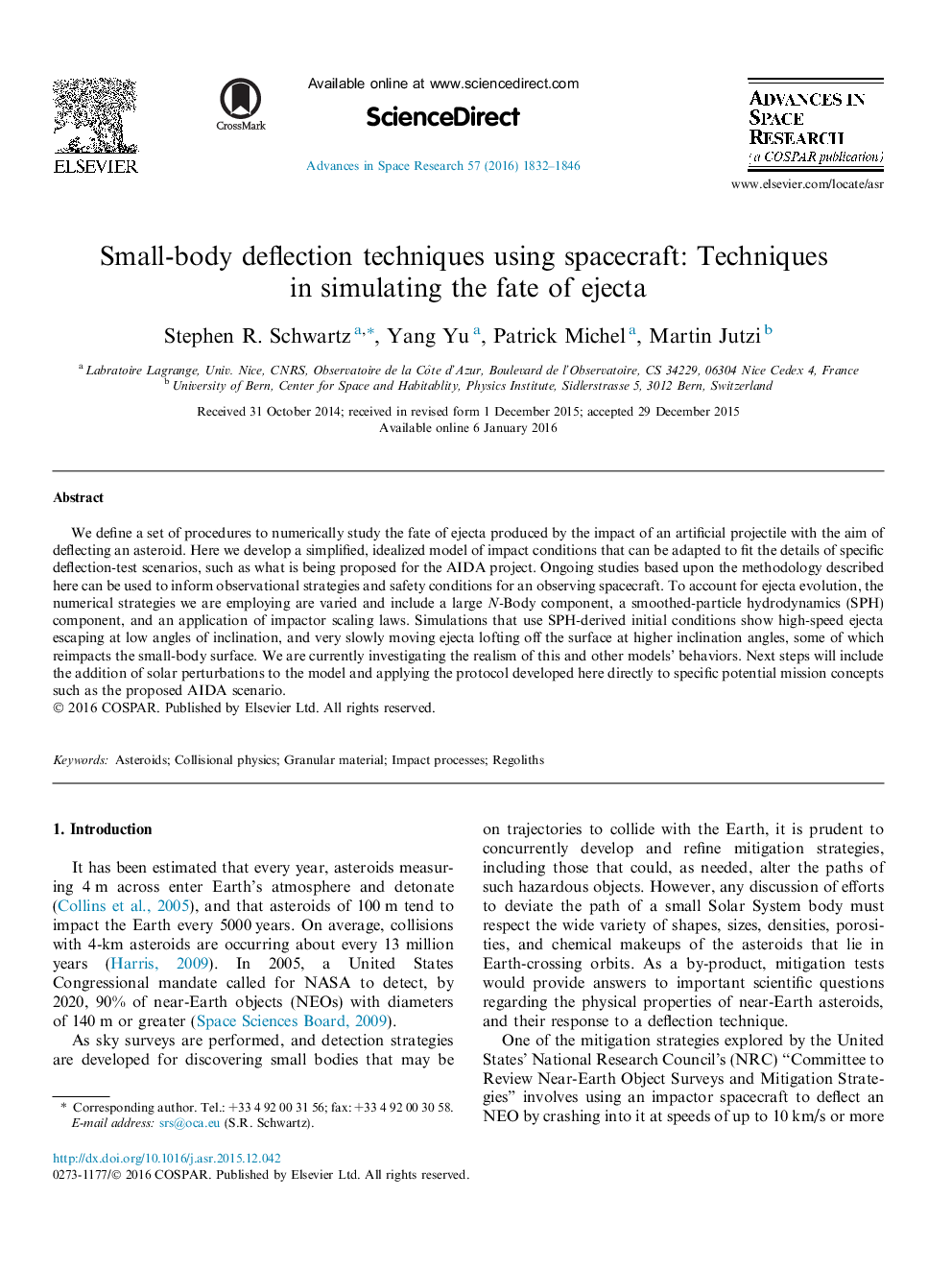| Article ID | Journal | Published Year | Pages | File Type |
|---|---|---|---|---|
| 1763391 | Advances in Space Research | 2016 | 15 Pages |
Abstract
We define a set of procedures to numerically study the fate of ejecta produced by the impact of an artificial projectile with the aim of deflecting an asteroid. Here we develop a simplified, idealized model of impact conditions that can be adapted to fit the details of specific deflection-test scenarios, such as what is being proposed for the AIDA project. Ongoing studies based upon the methodology described here can be used to inform observational strategies and safety conditions for an observing spacecraft. To account for ejecta evolution, the numerical strategies we are employing are varied and include a large N-Body component, a smoothed-particle hydrodynamics (SPH) component, and an application of impactor scaling laws. Simulations that use SPH-derived initial conditions show high-speed ejecta escaping at low angles of inclination, and very slowly moving ejecta lofting off the surface at higher inclination angles, some of which reimpacts the small-body surface. We are currently investigating the realism of this and other models' behaviors. Next steps will include the addition of solar perturbations to the model and applying the protocol developed here directly to specific potential mission concepts such as the proposed AIDA scenario.
Related Topics
Physical Sciences and Engineering
Earth and Planetary Sciences
Space and Planetary Science
Authors
Stephen R. Schwartz, Yang Yu, Patrick Michel, Martin Jutzi,
